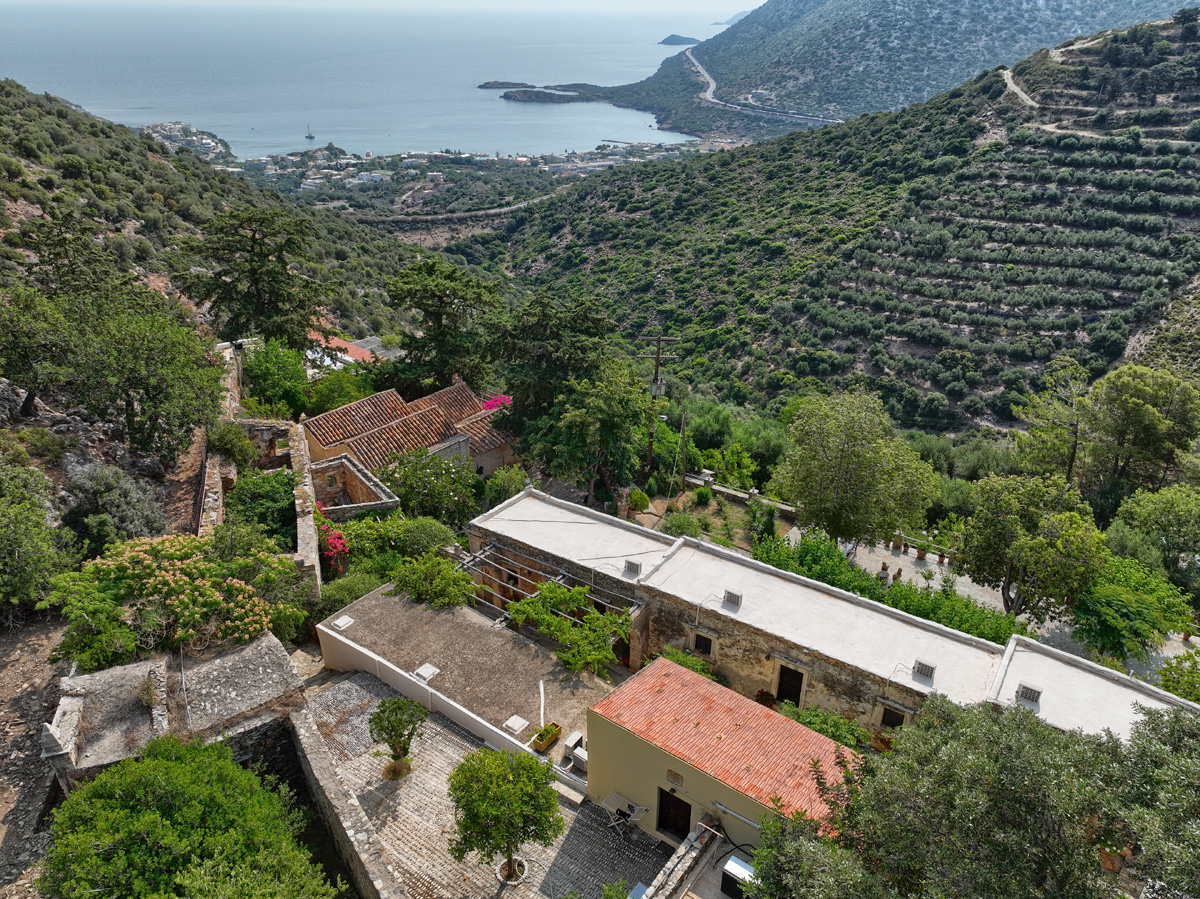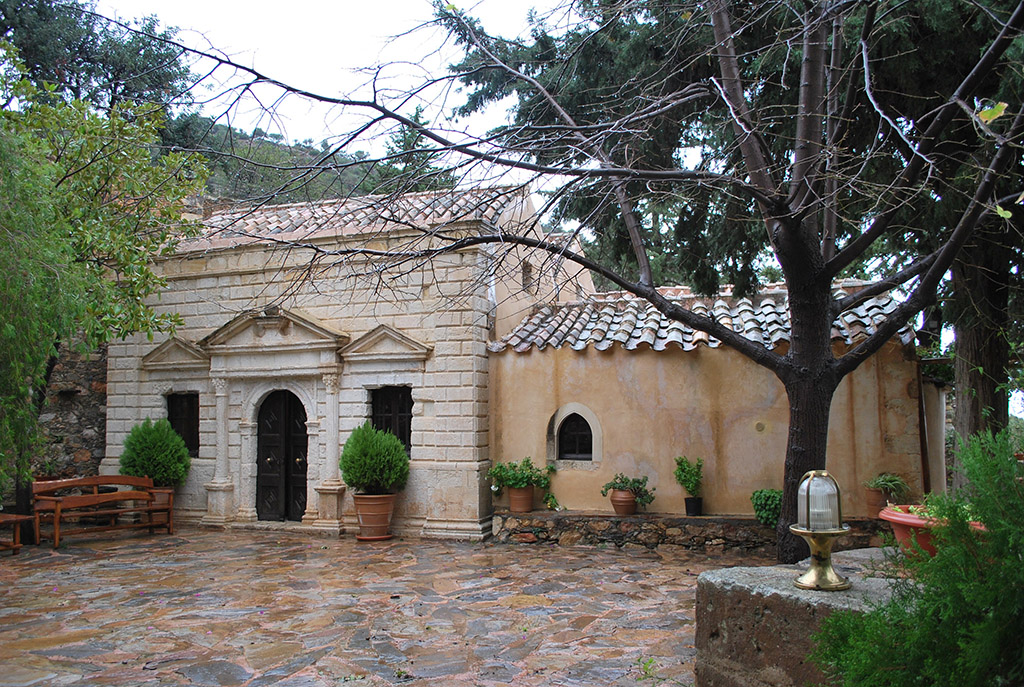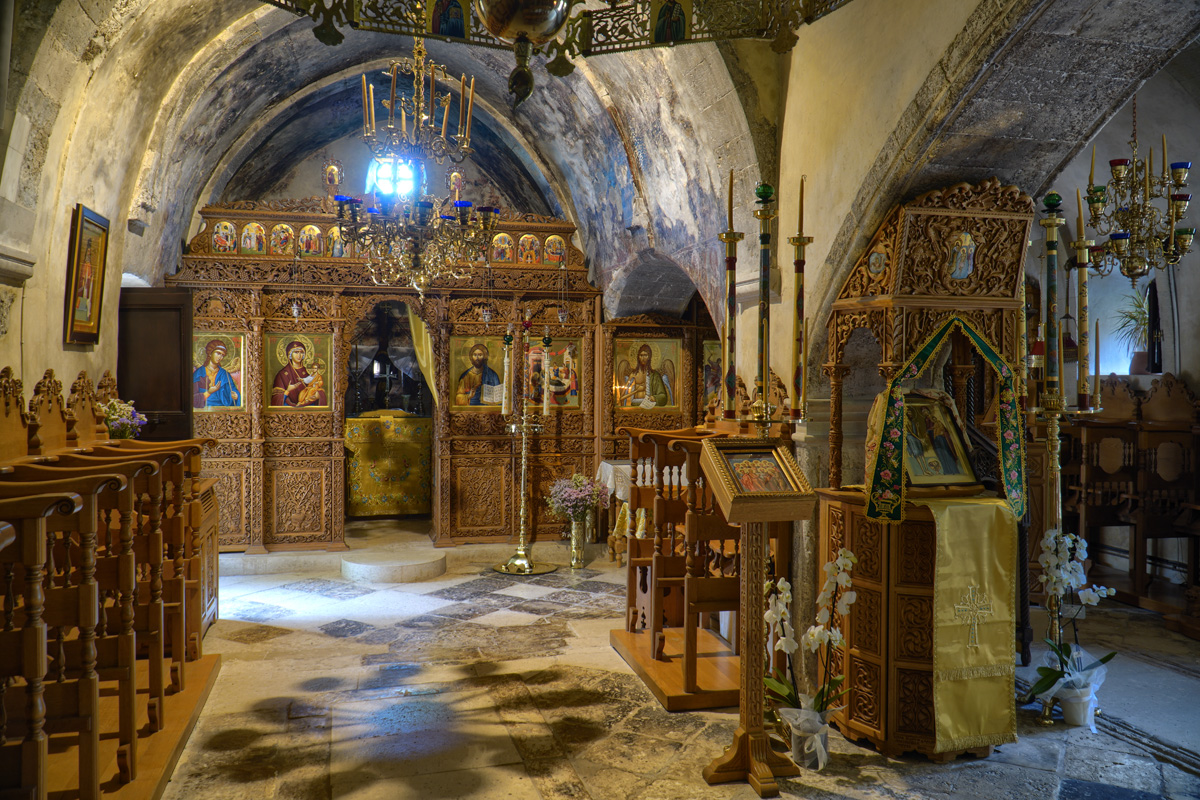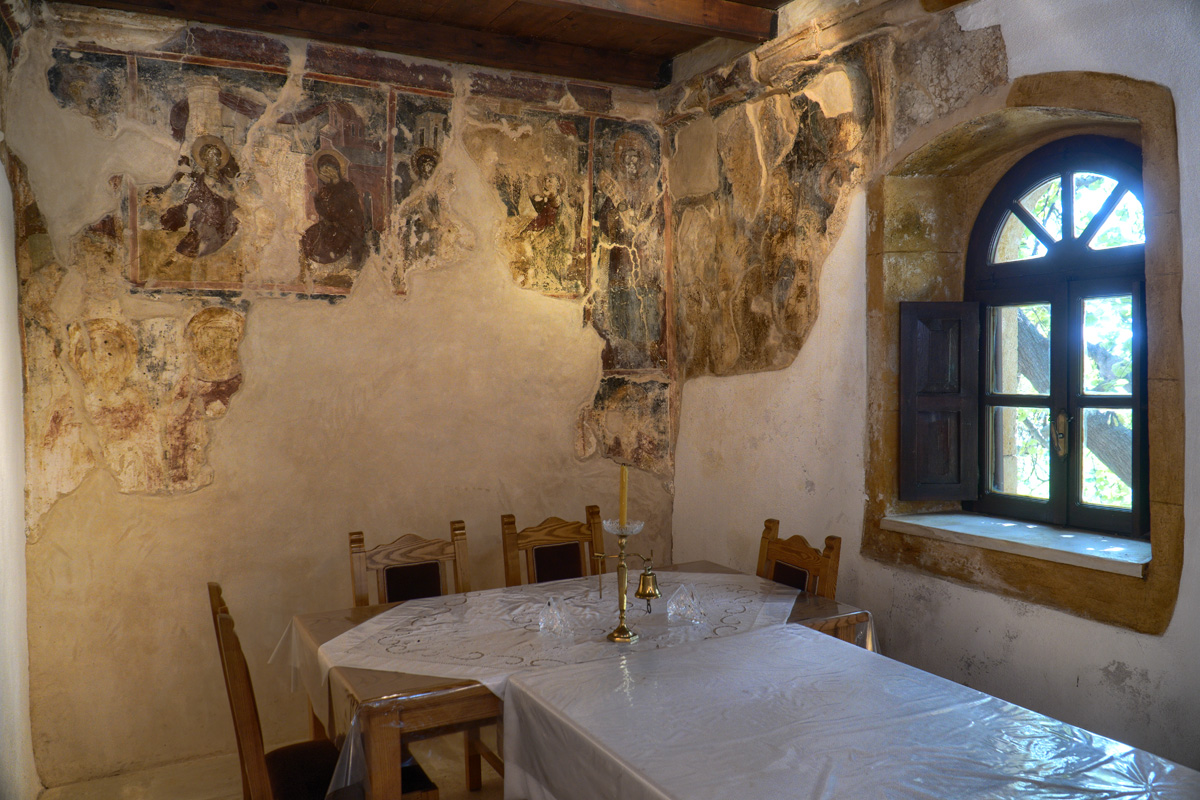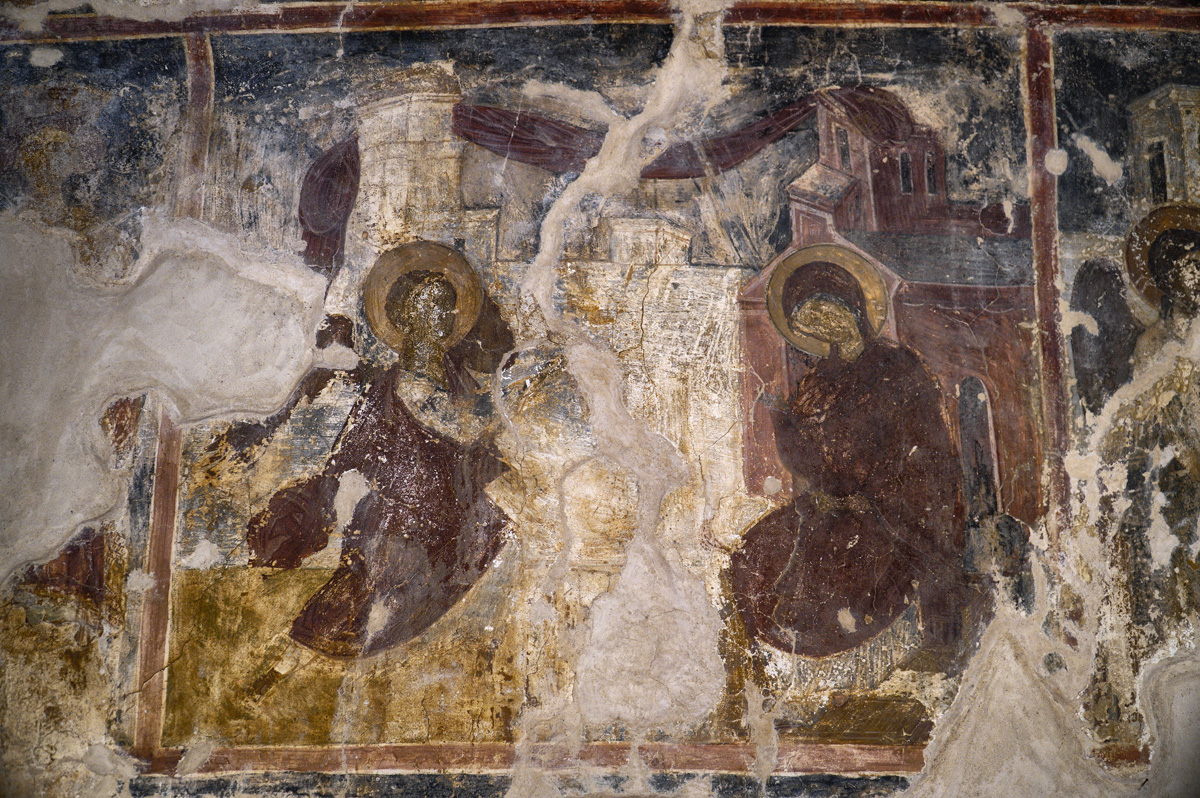Atali Monastery
The monastery of Atali, overlooking the Gulf of Bali, is built on terraces due to the steepness of the land.
The catholicon, situated outside of the complex, was built in three phases between the 15th and 17th centuries. Initially a single-nave church was constructed and decorated with wall paintings. Then, a second similar church was added on its south side. In a third phase, the double church was extended to the west. The southern façade of the western addition was formed with rock-cut limestones (opus isodomum), which gives the building a monumental appearance. The monastic complex also includes the monks' cells, a refectory, an olive press, a pottery workshop, a furnace, and stables; most of these buildings were constructed in the 17th century. In the refectory are preserved 17th century murals, an extremely rare finding, as the practice of mural painting was almost abandoned after the 15th century. A fountain from the Venetian period is located near the monastic complex.
Bibliography
Μ. Ανδριανάκης, Κ. Γιαπιτσόγλου, Χριστιανικά μνημεία της Κρήτης, Ηράκλειο 2012, σ. 283-4.
Θ. Παλιούρας, «Το μοναστήρι του Προδρόμου στο Μπαλί», Πεπραγμένα του Ε΄ Διεθνούς Κρητολογικού Συνεδρίου (Άγιος Νικόλαος 1981), τ. Β΄, Ηράκλειο 1985, σ. 304-321.
Photo Gallery
- The Catholicon of the Atali Monastery.
- The interior of the church.
- The murals in the refectory.
- The Annunciation. Mural in the refectory.

